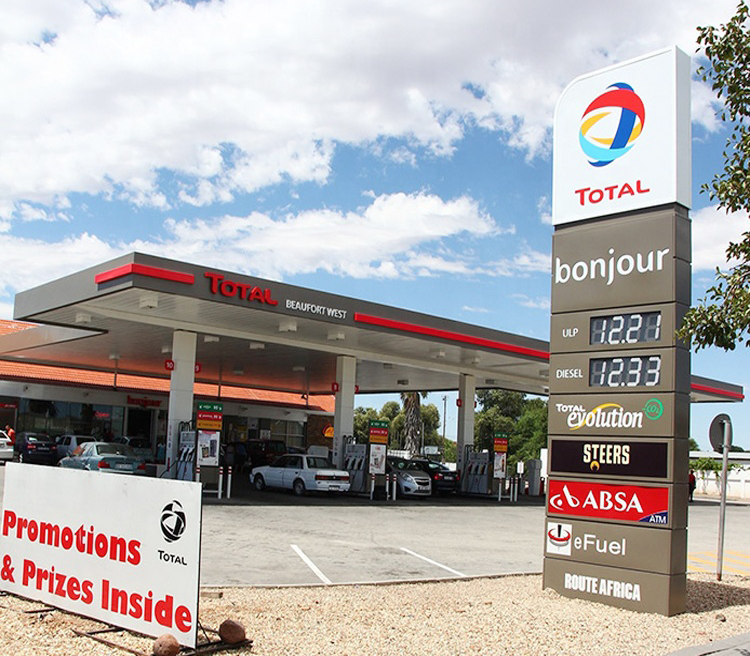Understanding Fuel Station Signage Regulations in Modern Infrastructure
The visual landscape of our roadways is significantly influenced by fuel station signs, which serve as crucial navigational markers for drivers. These signs not only guide motorists to essential services but must also comply with intricate local and federal regulations. While specific requirements vary by jurisdiction, understanding the comprehensive framework of fuel station sign regulations is essential for station owners, sign manufacturers, and urban planners alike.
Sign regulations for fuel stations encompass multiple aspects beyond mere font size, including visibility standards, illumination requirements, and placement specifications. These guidelines ensure that signage effectively serves its purpose while maintaining safety and aesthetic standards within communities.
Core Components of Fuel Station Sign Standards
Visual Clarity and Readability Requirements
Fuel station sign requirements typically mandate specific visibility standards to ensure clear communication with approaching drivers. While minimum font sizes may vary between jurisdictions, the underlying principle remains consistent: text must be legible from a safe distance that allows drivers to make informed decisions without compromising safety. Many municipalities establish these standards based on traffic speed, viewing distance, and road configuration.
Modern regulations often specify minimum letter heights rather than traditional font sizes. For instance, price numerals commonly must measure between 6 to 15 inches in height, depending on the road's speed limit and the sign's distance from the roadway. This approach ensures consistent visibility regardless of the typeface chosen.
Illumination and Contrast Standards
Beyond size requirements, fuel station sign requirements address illumination levels and contrast ratios. Signs must maintain specific brightness levels during both day and night operations, with many jurisdictions requiring automatic dimming features for nighttime use. The contrast between text and background must meet minimum ratios, typically 70% or higher, ensuring readability under various weather and lighting conditions.
Digital displays at fuel stations face additional scrutiny, with regulations governing refresh rates, maximum brightness, and automatic adjustment capabilities. These specifications help prevent driver distraction while maintaining effective communication of essential information.
Regional Variations in Signage Regulations
Urban vs. Rural Requirements
Fuel station sign requirements often differ significantly between urban and rural environments. Urban areas typically impose stricter size limitations and aesthetic guidelines to maintain visual harmony with surrounding architecture. Rural locations may permit larger signs to ensure visibility from greater distances, particularly along highways and major thoroughfares.
Local zoning ordinances frequently establish distinct overlay districts with specialized signage requirements. These may include historic districts with preservation guidelines or commercial corridors with enhanced visibility allowances.
State and Municipal Differences
While federal guidelines provide a baseline for fuel station sign requirements, state and municipal regulations often introduce additional specifications. Coastal regions may mandate hurricane-resistant construction standards, while areas prone to severe weather might require enhanced durability specifications. Some states implement uniform standards across all jurisdictions, while others delegate significant authority to local governments.
These variations necessitate careful review of local codes during the planning phase of any fuel station signage project. Compliance often requires coordination between multiple regulatory bodies and careful documentation of all applicable standards.
Modern Technology and Sign Compliance
Digital Integration Solutions
Advanced technology has revolutionized how fuel stations approach signage compliance. Digital displays can automatically adjust font sizes based on viewing distance and ambient conditions, ensuring optimal visibility while maintaining regulatory compliance. Smart systems can track and document compliance metrics, simplifying reporting requirements and maintenance schedules.
Modern fuel station sign requirements increasingly address digital content management, including specifications for price updates, emergency messaging capabilities, and integration with mobile applications. These technological advances help stations maintain compliance while enhancing customer service.
Automated Monitoring Systems
Contemporary fuel station operations often employ automated systems to monitor signage compliance in real-time. These systems can detect maintenance needs, verify illumination levels, and ensure consistent visibility across multiple locations. Remote monitoring capabilities allow operators to address compliance issues promptly, reducing potential violations and associated penalties.
Integration with weather monitoring systems enables automatic adjustments to illumination and contrast levels, ensuring optimal visibility during varying environmental conditions while maintaining compliance with local regulations.
Future Trends in Fuel Station Signage
Environmental Considerations
Emerging fuel station sign requirements increasingly incorporate environmental standards, including energy efficiency specifications and light pollution controls. LED technology and solar-powered solutions are becoming more prevalent, offering sustainable alternatives that meet or exceed traditional visibility requirements.
Future regulations may emphasize renewable energy integration and reduced environmental impact, potentially influencing both design standards and operational requirements for fuel station signage.
Smart City Integration
As smart city initiatives expand, fuel station sign requirements are evolving to accommodate integration with municipal infrastructure networks. This includes real-time price reporting systems, traffic management coordination, and emergency alert capabilities. Future standards may mandate compatibility with autonomous vehicle navigation systems and smart transportation networks.
The integration of artificial intelligence and machine learning technologies may lead to dynamic signage systems that automatically optimize visibility and compliance based on real-time conditions and user needs.
Frequently Asked Questions
How do fuel stations ensure consistent compliance with sign regulations?
Fuel stations maintain compliance through regular audits, automated monitoring systems, and scheduled maintenance programs. Many operators employ compliance management software and conduct periodic inspections to verify all signage elements meet current standards.
What factors influence minimum font size requirements for fuel station signs?
Key factors include road speed limits, viewing distance, sign placement height, ambient lighting conditions, and local traffic patterns. Regulatory authorities consider these elements when establishing minimum size requirements for different sign components.
How do digital signs affect compliance with font size regulations?
Digital signs offer flexible solutions for maintaining font size compliance through programmable displays that can automatically adjust based on viewing conditions. However, they must still meet all applicable size, brightness, and contrast requirements established by local authorities.
What are the consequences of non-compliance with sign regulations?
Non-compliance can result in monetary fines, mandatory sign modifications, operating restrictions, and potential license implications. Regular inspections by regulatory authorities ensure ongoing adherence to established standards.

